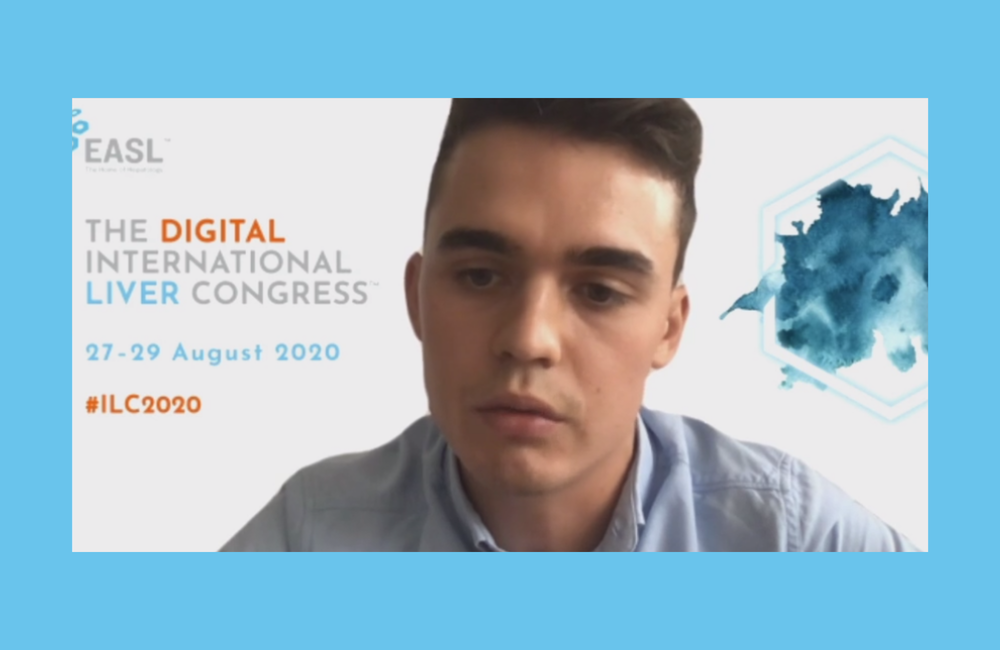
People living with HIV do not have a higher risk of liver-related complications or death from liver disease after hepatitis C treatment with direct-acting antivirals, researchers from the French HEPAVIH cohort reported this week at the Digital International Liver Congress.
Untreated, people with HIV and hepatitis C co-infection have a higher risk of liver disease progression and death from liver disease than people with hepatitis C alone. The introduction of direct-acting antiviral treatment for hepatitis C has led to cure rates above 90% in most populations and a reduced risk of liver disease progression, but the long-term health outcomes of people with co-infection are unclear.
Mathieu Chalouni of the University of Bordeaux presented an analysis of the relative risk of liver-related events and death in people living with HIV and hepatitis C and people with hepatitis C alone (monoinfected). Liver-related events were defined as liver decompensation, hepatocellular carcinoma (HCC) or liver transplant. Deaths were defined as liver-related if due to decompensation, HCC or liver transplant.
The researchers matched four people with hepatitis C alone from the HEPATHER cohort with one person who had been co-infected with HIV and hepatitis C from the HEPAVIH cohort. Participants were matched by age and sex. All participants were treated with direct-acting antivirals between 2014 and 2017. The analysis excluded people with a history of liver-related events prior to treatment
A total of 2049 people with previous hepatitis C infection and 592 people with HIV and previous hepatitis C infection were included in the study. The cohort was predominantly male (73%) with a median age of 53 years. People with HIV had been living with hepatitis C for longer (18 years vs 14.5 years) but cirrhosis was less common among people with HIV (28% vs 41%). Ninety-three per cent of people with HIV and 94.6% of people with hepatitis C were cured; the predominant treatment regimens were sofosbuvir/ledipasvir or sofosbuvir/daclatasvir.
Alcohol consumption was more common in people living with HIV (53% vs 2%), as was smoking (60% vs 48%).
Participants were followed for a median of 2.8 years after treatment. There was no significant difference in the incidence of liver-related events (17 events in people living with HIV and 66 in the monoinfected group), or 12.4 per 1000 person-years of follow-up in the HIV group and 13.4 per 1000 PY in the hepatitis C monoinfected group) (p = 0.78).
Nor was there a significant difference in liver-related mortality (8 vs 28 deaths, 5.6 per 1000 PY vs 4.9 per 1000 PY (p = 0.76). People living with HIV and hepatitis C did not have a raised risk of liver-related events (HR = 0.67 95% CI: 0.27-1.67) or dying from liver disease (HR = 0.94 95% CI: 0.19-4.67) compared to people with hepatitis C alone.
There was a trend towards higher non-liver-related mortality in people living with HIV (18 vs 28 deaths): 12.5 per 1000 PY (95% CI: 7.9-19.8) in HIV/hepatitis C co-infected people and 4.9 per 1000 PY (95% CI: 3.4- 7.1) in hepatitis C monoinfected people (p < 0.01).
Overall, 88% of people with HIV who died had achieved a sustained virologic response, compared to 82% of monoinfected people who died.
Mathieu Chalouni said that the higher risk of non-liver mortality may be explained by HIV-related inflammation and immunodeficiency or higher alcohol and tobacco consumption. As reported in an article published this month in the Journal of Hepatology, this cohort had a higher risk of non-liver cancer and non-AIDS-defining cancers and these were the chief causes of death in people with HIV during the follow-up period.
Chalouni M et al. HIV co-infection and risk of morbidity and mortality in HCV patients treated by DAA. Journal of Hepatology, supplement 1 [International Liver Congress], S105, AS153, 2020.
